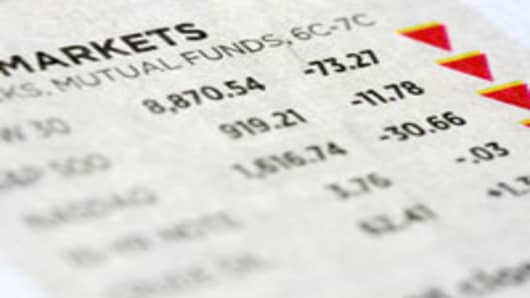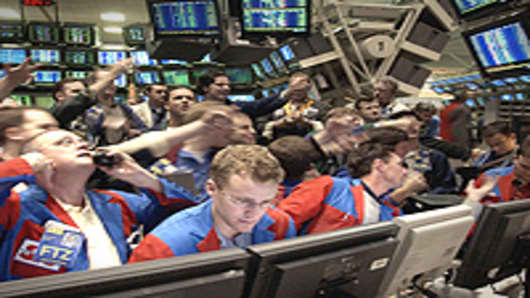Adversity always brings opportunity. That has long been the adage of the financial world. Now that principle is playing out in a corner of Chicago in an intriguing manner.
As global investors reel from the latest string of disasters and upheavals, ranging from the tsunami in Japanto political strife in the Middle East, the Chicago Board Options Exchange is quietly reaping the benefits in relation to its proprietary product, the Vix.
In recent days, the level of the Vix , which measures the implied volatility of S&P 500 options, jumped to 31, before falling back to below 20 yesterday. But what is more noteworthy is that trading in this index – dubbed the “fear gauge” – has exploded as investors try to speculate on volatility or protect themselves.
Last week, for example, a record 1 million Vix contracts changed hands on one day after a spate of bad news from Japan and the Middle East. This beats the previous daily record of 715,000 contracts recorded in December 2009 and is several times the level of anything seen even during the crisis of 2008. Is this to be welcomed? For the CBOE, the answer is a resounding “yes”. The Vix was only launched as a proprietary product seven years ago. But trading volumes have now surged so much that the Vix has become a “significant” source of revenues for the exchange, according to William Brodksy, CBOE chief executive.
So, unsurprisingly, as the CBOE tries to bolster its position amid the consolidation now sweeping the exchanges world, it is seeking to make further gains from fear. It is teaming up with other global exchanges to license the Vix product. It is creating new Vix-style indices for single-name stocks, starting with Apple , Google , Amazon , Goldman Sachs and IBM .
It also hopes to launch Vix-style indices for commodities such as gold and oil. The latter looks particularly timely given the turmoil in the energy marketright now.
But perhaps the more intriguing question that investors and policymakers should ask is what this trend is doing to market behavior more broadly. The CBOE itself says it cannot tell exactly who is behind the recent upsurge in Vix volumes. Some of it seems to be driven by sophisticated US retail investors who are increasingly using the Vix as an equity market hedge (since the Vix moves in an opposite direction to the S&P 500).
But, according to Mr Brodsky, another crucial factor is that investment banks, such as Barclays, have recently launched a number of exchange-traded notes linked to the Vix. These are proving popular with investor and retail investors who want to bet on global instability, not just in the US but Europe. And with some 23 ETNs now in the market, banks are being forced constantly to adjust their positions, boosting volumes.
Now, in theory, this could potentially be very beneficial for the market. After all, the more liquidity that exists in any product, the more accurate prices are likely to be and the smoother any adjustments. And the Vix certainly does provide a powerful barometer of sentiment that can be quickly grasped by investors (or journalists) alike. “We find it useful,” observes Colin Robertston, head of fixed income at Northern Trust, who says he now watches it closely – even though he does not trade it.
But as sociologist Donald Mackenzie points out in his book An Engine Not a Camera, when new financial measures and models emerge, they do not simply offer a “snapshot” of activity, they can drive behavior and change it too. Or, as George Soros says, markets have a nasty habit of behaving in a “reflexive” manner, reacting to themselves.
Hence, when credit default swap prices started becoming easily accessible and visible in 2007, that affected how the crisis around Bear Stearns and Lehman Brothers developed.
So, too, when the ABX index was launched, offering a new barometer of sentiment in the once-opaque mortgage derivatives world.
With the Vix, the spreading popularity might have less impact on behavior since equity prices were already completely transparent. But then again, before the Vix was launched, volatility was not something that ordinary investors usually tracked.
Even today, there is still confusion about what the Vix “means”. Although the CBOE says the Vix merely reflects implied volatility, some investors assume it has predictive powers for equity markets.
The question that hovers over the market, in other words, is whether the Vix can drive market swings rather than just reflect them?
Does the existence of another hedging tool smooth adjustments or can a “fear” gauge create more fear? My own instinct is that creating the Vix has been beneficial – on balance, more transparency is good. But as global instability rises, and financial flows and electronic communications speed up, these questions about “reflexivity” are becoming more important. Better keep watching the Vix – not just for its level but volumes too.



